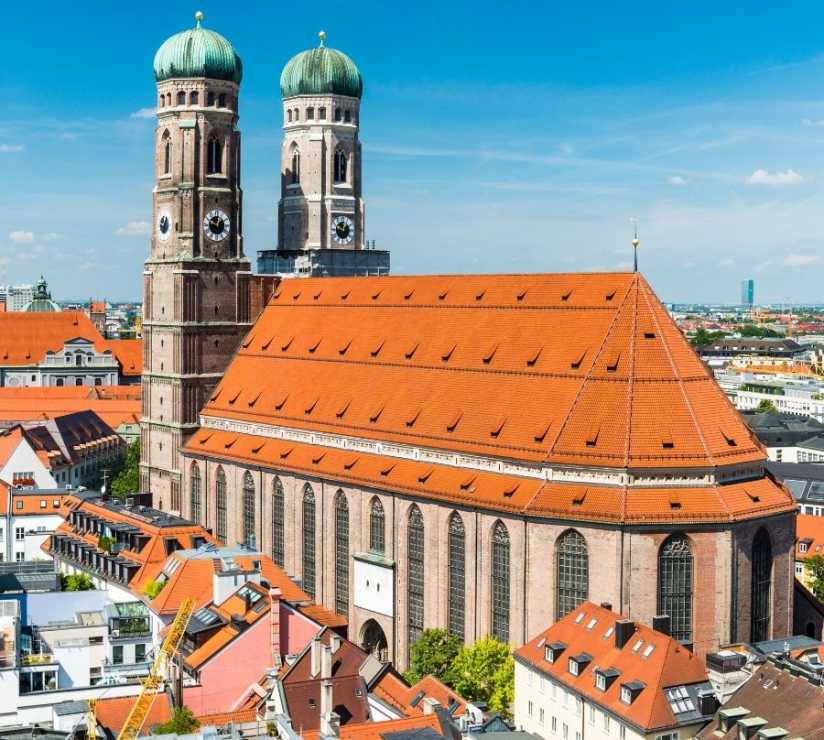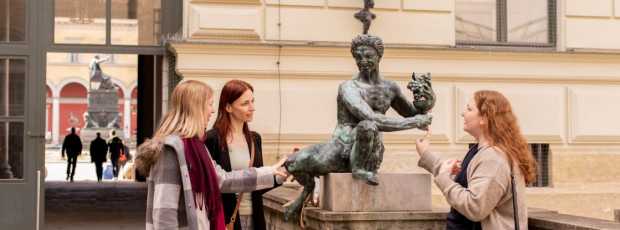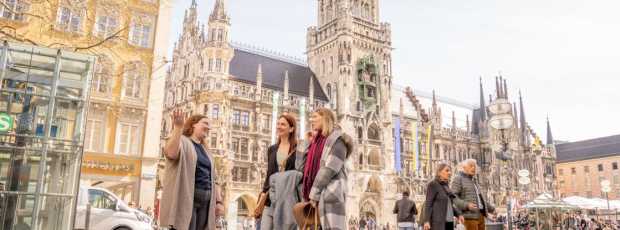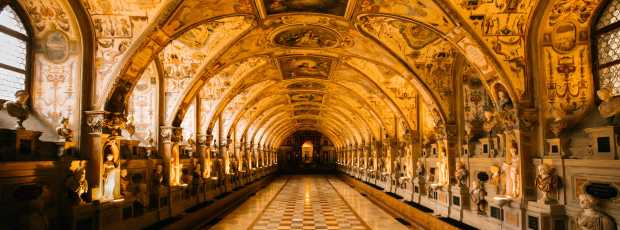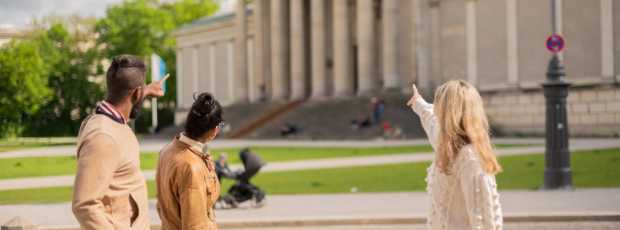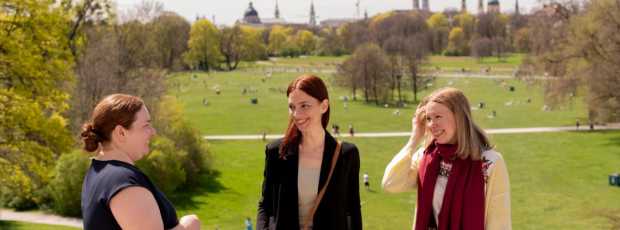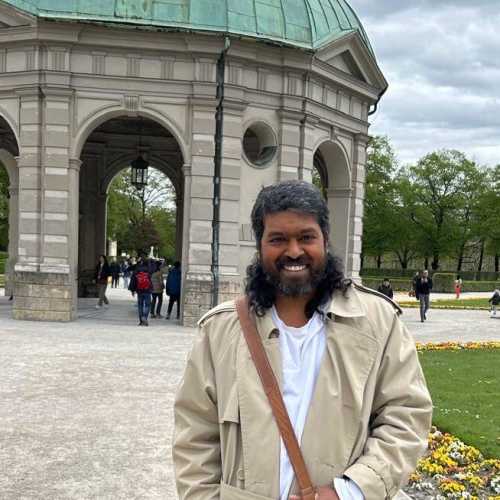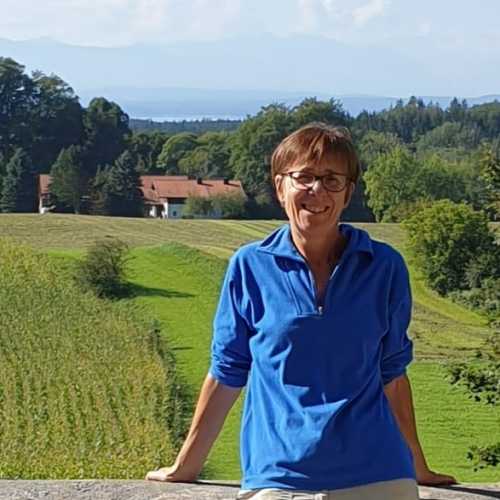Table Of Contents
- Why Munich Sightseeing Feels Personal
- Walking Through the Old Town's Layers
- Bird's-Eye Views: Climbing Alter Peter and the Observation Deck
- Where to Hop On (and Off): Tours Worth Taking
- Munich's Parks: From Royal Gardens to the Chinese Tower
- Museums and Magnificence
- Famous Munich Landmarks You Can't Miss
- Olympic Echoes and Modern Icons
- Day Trips That Redefine Sightseeing
- From S-Bahn to St. Peter's: Getting Around Efficiently
- One Week, Many Tours: How to Plan It Right
Why Munich Sightseeing Feels Personal
When people ask me about sightseeing in Munich, I never point them toward the standard tourist checklist. After fifteen years of living here, I've realized that Munich reveals itself differently to everyone. This isn't about following a rigid sightseeing tour München companies package and sell. It's about understanding how this city breathes.
Munich sits at the intersection of Alpine tradition and modern innovation, where century-old beer halls share streets with cutting-edge museums. The best sightseeing in Munich happens when you stop rushing from landmark to landmark and start noticing the details that locals take for granted, and perhaps even visiting a famous beer hall along the way.
Walking Through the Old Town's Layers
The heart of Munich's old town reveals itself in layers, with Marienplatz serving as the perfect starting point. The New Town Hall dominates the square with its neo-Gothic towers, housing the famous Glockenspiel that draws crowds at 11 AM, noon, and 5 PM during summer.
From Marienplatz, walk south to Viktualienmarkt, where Munich's food culture comes alive every morning except Sunday. This isn't just a tourist attraction – locals still shop here for fresh produce and artisanal specialties. Each stall represents generations of family businesses dating back to 1807.
The narrow streets between buildings were designed for horse-drawn carts, explaining why modern traffic moves slowly through the old town. Walking north toward the Residenz, you'll notice street names reflecting Munich's position as both Bavarian capital and center of Catholic learning.
Bird's-Eye Views: Climbing Alter Peter and the Observation Deck
For spectacular views of city's rooftops and the distant Alps, climb the observation deck at St. Peter's Church – locals call it Alter Peter. The 299 steps lead to the city's best panoramic viewpoint, where red-tiled rooftops stretch toward modern districts with the Alps framing the southern horizon.
From Old Peter's tower, you understand how Munich spreads in concentric circles from its medieval core. The church, dating from the 12th century, serves as Munich's oldest parish church. Late afternoon provides the best photography light, when setting sun illuminates the city's western facades.
Looking for a private city experience in Munich?
Explore the city with a local who plans a private day just for you; no groups, no scripts.
Where to Hop On (and Off): Tours Worth Taking
Munich's organized sightseeing tours range from excellent to forgettable. The hop-on, hop-off system works well for flexibility, while Gray Line operates comprehensive routes connecting old town with Olympic Park and the museum quarter.
However, the best guided tour experience happens on two wheels. Bike tours reveal green corridors and riverside paths that buses can't access. The Isar River trail offers 8 kilometers of car-free bike tour cycling through the city center, passing beer gardens and urban beaches most tourists never discover.
Munich's flat terrain and extensive cycle paths create ideal conditions for exploring. A typical three-hour bike tour covers 15-20 kilometers, including the English Garden, Olympic Park, and university district.
Munich's Parks: From Royal Gardens to the Chinese Tower
The English Garden stretches across 375 hectares, making it larger than Central Park. Created in 1789 as a revolutionary "people's park," the Englischer Garten was designed for all social classes to enjoy nature together.
The Tower anchors the park's famous beer garden, where 7,000 seats accommodate everyone from business lunches to family celebrations. Unlike traditional beer halls, beer gardens allow visitors to bring food while purchasing drinks, a centuries-old custom.
Beyond the beer garden, surfers ride standing waves in the Eisbach stream year-round, creating Munich's most unlikely sporting spectacle. The royal garden sections showcase formal landscaping that influenced park design across Europe. Free access makes this an essential stop for budget-conscious travelers.
Museums and Magnificence
The Deutsches Museum, one of Munich's magnificent buildings commands an entire Isar River island, ranking among the world's largest science museums with 28,000 objects. Interactive exhibits let visitors operate historic machinery and explore full-scale reconstructions of mines, ships, and aircraft hangars.
The aviation section houses everything from Wright brothers' replicas to modern jets, while the transportation hall features Bavaria's first locomotive alongside contemporary electric vehicles. Focus on two or three sections per visit rather than attempting everything.
BMW Welt represents contemporary museum culture, where corporate branding meets architectural excellence. The double-cone design has become a landmark complementing the nearby Olympic Tower.
What if your day in Munich was planned by someone who knows it — and you?
City Unscripted matches you with a local host who creates a private experience based on your interests, not a set route.
Famous Munich Landmarks You Can't Miss
Every one of the cities landmark carries stories beyond what conventional tour guides can show you. The Frauenkirche, with distinctive green onion domes, serves as the city's most recognizable symbol and Munich's cathedral. Its twin towers, completed in 1488, were Munich's tallest structures for centuries and remain the city's defining silhouette against the Alpine backdrop.
Inside, Gothic architecture emphasizes spiritual contemplation with white walls and minimal decoration. The famous "devil's footprint" marks where legend claims Satan stood, unable to see windows due to clever pillar arrangement. What most visitors miss is the church's acoustic design – whisper at one pillar and someone standing at the corresponding pillar across the nave can hear you clearly. The cathedral also houses the tomb of Holy Roman Emperor Ludwig the Bavarian, connecting Munich directly to medieval European power.
The best views of the cathedral come from the old town's elevated positions, particularly during early morning when mist often clings to the towers. Local photographers know that winter snow on the green copper domes creates Munich's most iconic image.
Max-Joseph-Platz showcases royal heritage through the Residenz Theater and National Theater, both commissioned to establish Munich as a cultural capital rivaling Vienna and Berlin. The square's neoclassical harmony demonstrates 19th-century urban planning ambitions. The Residenz complex spans 130 rooms across ten courtyards, representing Europe's largest city palace and centuries of Bavarian royal accumulation.
Beyond these famous sites, Munich's landmark character emerges in smaller details worth visiting. The Isartor, one of Munich's surviving medieval gates, houses a museum dedicated to comedian Karl Valentin, reflecting how Munich balances reverence for history with appreciation for humor. The Sendlinger Tor area connects old town exploration with trendy shopping districts, showing how landmarks serve as bridges between Munich's past and present.
Olympic Echoes and Modern Icons
Munich's Olympic Park transforms former airport grounds into lasting 1972 Olympics legacy. The tent-like roof structures, designed by Frei Otto, still represent innovative architecture fifty years later.
The Olympic Tower's observation deck provides Munich's highest public viewpoint at 190 meters. On clear days, panorama extends to Austrian Alps, with Germany's highest peak visible on the southern horizon.
The Allianz Arena, home to FC Bayern Munich since 2005, features an illuminated façade displaying different colors depending on which team plays. Its 75,000-seat capacity hosts football matches and international concerts.
Day Trips That Redefine Sightseeing
Munich's Alpine location opens exceptional day trip possibilities and is one of the top Munich experiences. The Romantic Road begins south of Munich, leading through medieval towns and castles toward Austria.
Neuschwanstein Castle, King Ludwig II's 19th-century fantasy, inspired Disney's Sleeping Beauty Castle. The two-hour journey offers spectacular Alpine scenery through towns like Oberammergau, famous for its Passion Play.
Dachau, 30 minutes by S-Bahn, provides essential historical context. The concentration camp memorial preserves buildings documenting Nazi persecution and genocide – not tourism but necessary education about Germany's darkest chapter.
The Alps offer hiking and mountain railways within two hours. The Zugspitze, reachable by cogwheel train from Garmisch-Partenkirchen, provides glacier skiing and panoramic views across four countries.
Tip
We match you with the right host, not just any guide.Want to experience the real Munich with someone who lives there?
A fully private experience, planned and led by a local host who tailors the day to you
From S-Bahn to St. Peter's: Getting Around Efficiently
Munich's public transportation ranks among Europe's most efficient. The S-Bahn connects city center with suburbs, airport, and nearby towns. S1 and S8 lines reach the airport in 40 minutes.
For sightseeing within the center, walking often proves faster than transport. Marienplatz to English Garden takes just 15 minutes on foot. Munich's bike-sharing system, MVG Rad, offers 3,000 bikes at 300 stations for flexible transportation.
Free walking tours from Marienplatz provide orientation while highlighting sites to see in Munich worth visiting independently. The old town's compact size means major landmarks stand within ten minutes of each other.
One Week, Many Tours: How to Plan It Right
A week allows comprehensive exploration without rushing. Start with old town orientation – Marienplatz, St. Peter's tower, Viktualienmarkt, and Residenz. Day two combines English Garden walks with museum visits.
Schedule guided tours strategically throughout the week. Bike tours provide excellent overviews early on, while neighborhood walking tours offer deeper insights after general orientation. Munich's concert venues complement daytime sightseeing.
Alternate intensive city exploration with relaxing Alpine day trips to avoid cultural overload. Balance structure with spontaneity – book essential tours advance but leave time for spontaneous discoveries and also consider.
Munich rewards visitors who approach it as locals do, with curiosity and appreciation for both landmarks and neighborhood details. This city reveals its secrets to those who take time to truly see rather than simply check off tourist lists.
Ready to plan your perfect day in Munich?
Start your experienceWhat if your day in Munich was planned by someone who knows it — and you?
City Unscripted matches you with a local host who creates a private experience based on your interests, not a set route.
Want to experience the real Munich with someone who lives there?
A fully private experience, planned and led by a local host who tailors the day to you
